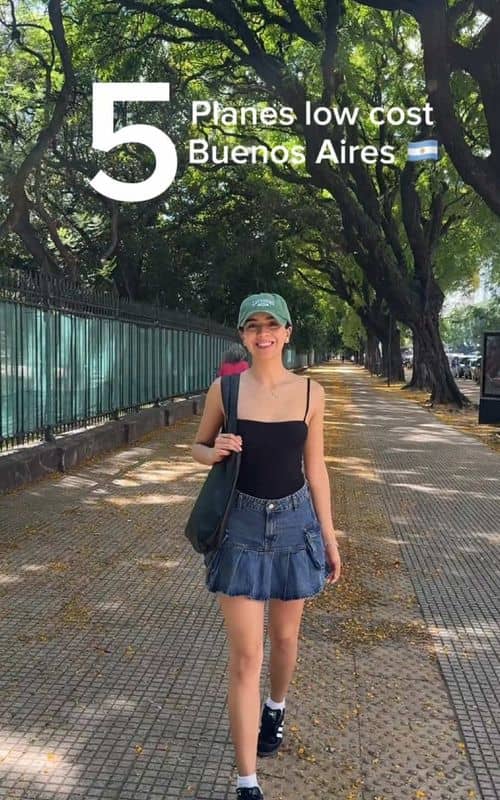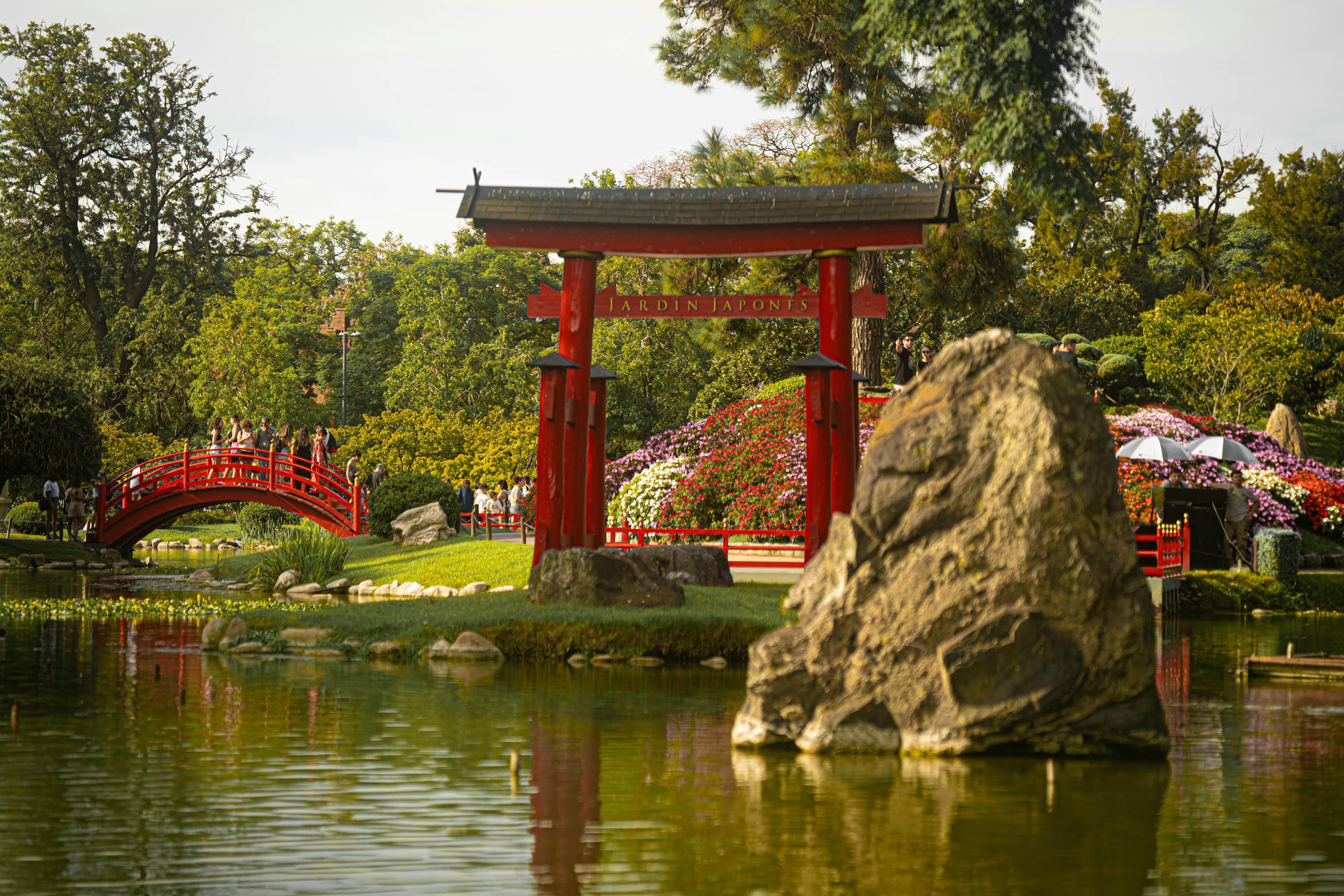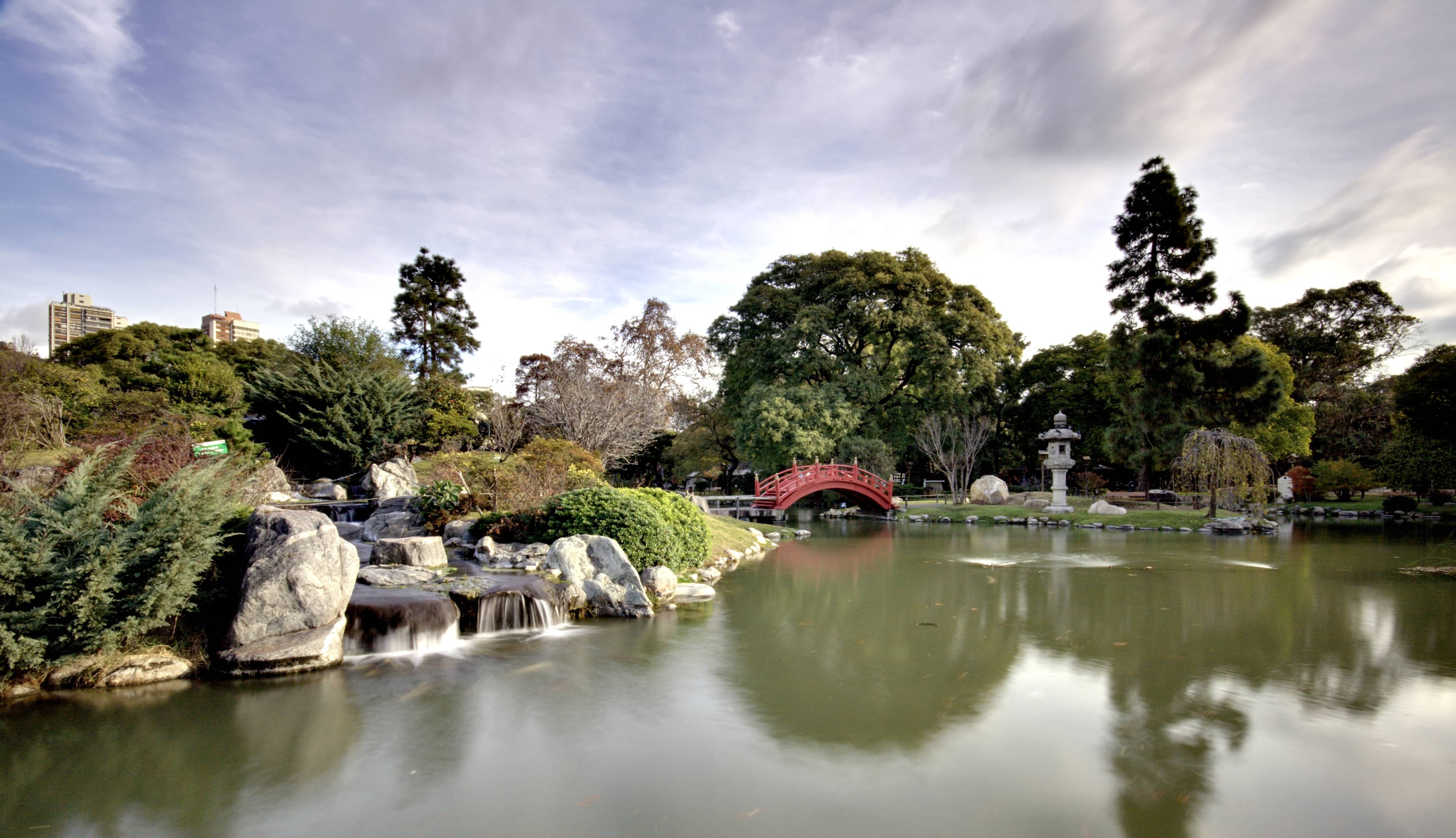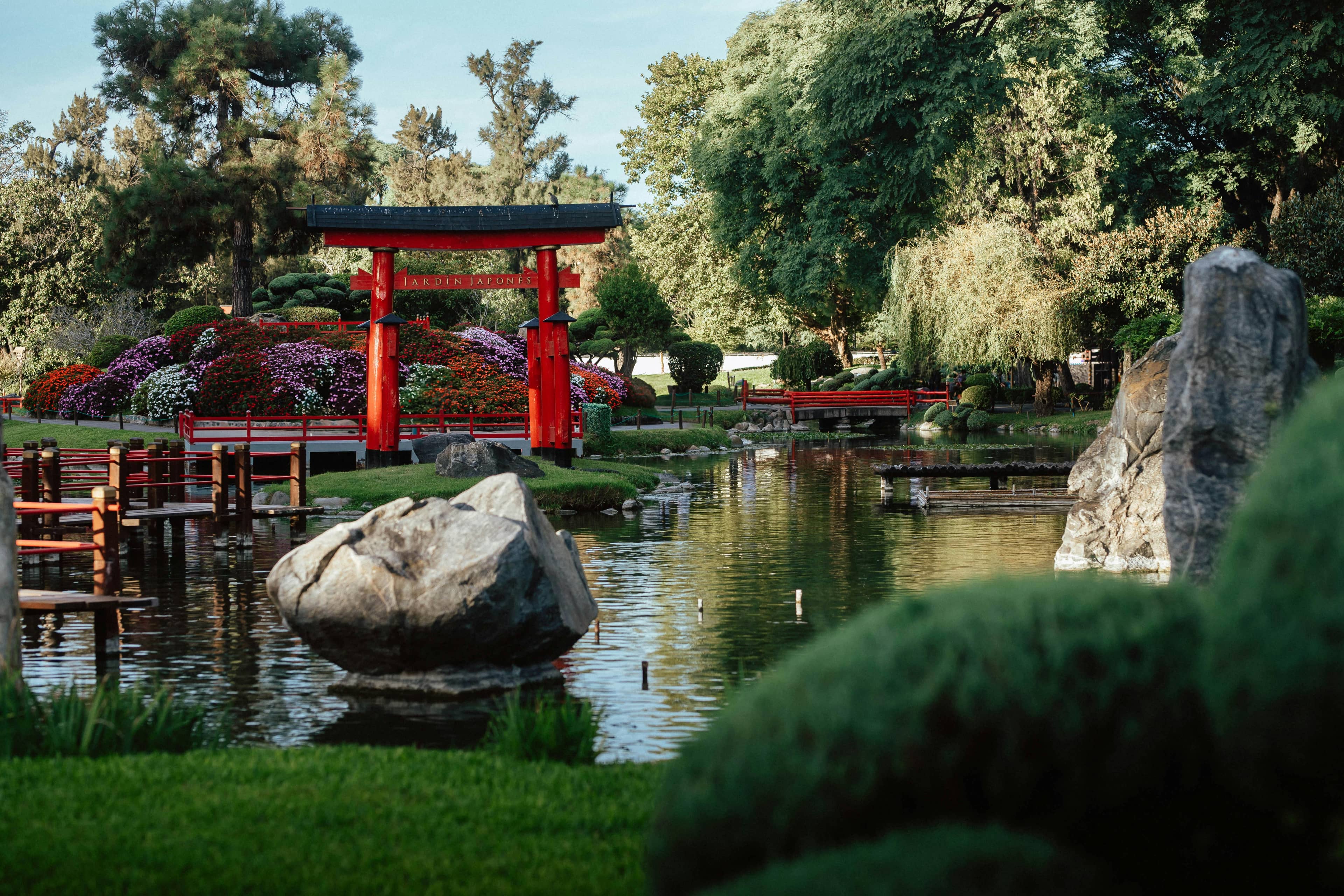
Jardín Japonés Buenos Aires
An oasis of tranquility in Buenos Aires, this meticulously designed garden offers a serene escape with traditional Japanese landscaping, ponds, and ar...
Highlights
Must-see attractions

Social
From TikTok & Reddit
Best Time
Fewer crowds, more peaceful

Jardín Japonés Buenos Aires
Best Time
Fewer crowds, more peaceful
Highlights
Must-see attractions
An oasis of tranquility in Buenos Aires, this meticulously designed garden offers a serene escape with traditional Japanese landscaping, ponds, and architecture.
"A beautifully maintained Japanese garden that offers a peaceful escape from the city."

🎯 Resident vs. Tourist Pricing
Argentine residents often get significantly lower entry fees. Bring your DNI to take advantage of this .
📸 Perfect Photo Spots
Almost every corner offers a beautiful photo opportunity. The bridges and ponds are particularly scenic .

Highlights
Discover the most iconic attractions and experiences
Tranquil Ponds & Koi Fish
Throughout the garden
Wander past serene ponds filled with vibrant koi fish, a quintessential element of Japanese garden design.

Iconic Red Bridges
Over the ponds
Cross charming red bridges that offer picturesque views and perfect photo opportunities amidst lush greenery.

Sakura (Cherry Blossom) Season
Various trees throughout the garden
Witness the ephemeral beauty of cherry blossoms in late August/early September for a truly magical experience.

Traditional Japanese Architecture
Pagodas and tea houses
Admire authentic Japanese structures, including pagodas and tea houses, adding to the garden's cultural immersion.
Plans like a pro.
Thinks like you
Planning Your Visit
Beat the Crowds & Save
Timing Your Visit for Blooms
Best Times
Insider Tips
from TikTok, Instagram & Reddit
🎯 Resident vs. Tourist Pricing
Argentine residents often get significantly lower entry fees. Bring your DNI to take advantage of this.
📸 Perfect Photo Spots
Almost every corner offers a beautiful photo opportunity. The bridges and ponds are particularly scenic.
🌸 Sakura Season Alert
If you're after cherry blossoms, aim for late August/early September. They only last a few days.
🚶♀️ Stroll or Relax
It's a great place for a relaxing walk, but not ideal for picnics. Enjoy the scenery and tranquility.
Tips
from all over the internet
🎯 Resident vs. Tourist Pricing
Argentine residents often get significantly lower entry fees. Bring your DNI to take advantage of this.
📸 Perfect Photo Spots
Almost every corner offers a beautiful photo opportunity. The bridges and ponds are particularly scenic.
🌸 Sakura Season Alert
If you're after cherry blossoms, aim for late August/early September. They only last a few days.
🚶♀️ Stroll or Relax
It's a great place for a relaxing walk, but not ideal for picnics. Enjoy the scenery and tranquility.
🍣 On-site Dining Options
There are food options within the park, including a sushi restaurant, allowing for a longer visit.
What Travellers Say
Reviews Summary
Visitors consistently praise the Japanese Garden for its beautiful, well-maintained grounds and authentic atmosphere, offering a peaceful escape from the city. Many highlight the stunning photo opportunities and the serene ambiance. However, some find the entrance fee, especially for non-residents, to be somewhat expensive for the garden's size, and crowds can be significant during peak times.
"This is such a beautiful place. A garden I would never expect to see in Argentina. Lots of cool fish. But there’s also alooooooot of crowds so be prepared for that. Definitely worth the price of admission."
Alexander White
"A beautifully maintained Japanese garden that offers a peaceful escape from the city. The landscaping is stunning, with carefully designed ponds, bridges, and traditional structures that create an authentic and serene atmosphere. It's a great place for a relaxing stroll, photography, or simply unwinding in nature. The koi fish and bonsai trees add a nice touch to the experience. Definitely worth a visit if you appreciate Japanese aesthetics and tranquility! 🌿🎋🏯"
Elias Chelala (Chewy)
"Beautiful garden!
Pros: you can take beautiful photos in almost every corner. There are food options within the park, which allows you more time for your visit, enjoying a good meal or a quick bite, depending on your choice.
Cons: it is somewhat expensive given the size of the park and the amount of things to see.
It is not a park to have a picnic at, but rather a park for beautiful pictures."
C BB
What People Like
What People Dislike
Frequently Asked Questions
🚇 🗺️ Getting There
The Japanese Garden is located in Palermo, a popular neighborhood in Buenos Aires. You can reach it by various public transport options, including buses (colectivos) that frequent the area. Taxis and ride-sharing services are also readily available. Many visitors combine a trip to the Japanese Garden with other attractions in Palermo, such as the Rosedal or the Botanical Garden.
Yes, the Japanese Garden is well-served by public transport. Several bus lines stop nearby, making it easily accessible for those using Buenos Aires' extensive bus network. It's advisable to check local transport apps for the most up-to-date routes and schedules.
Parking in Palermo can be challenging. There are paid parking lots available near the garden, but they can fill up quickly, especially on weekends. Consider using public transport or ride-sharing services to avoid parking hassles.
🎫 🎫 Tickets & Entry
The entrance fee varies. For Argentine residents, it's typically around ARS $4,500 (as of recent information), but this can change. Non-residents may face a significantly higher fee. It's always best to check the official website or recent social media posts for the most current pricing.
Yes, there are several. Children under 12 (with DNI and accompanied by an adult), seniors over 65 (Argentine residents with DNI), and individuals with disabilities (with a certificate) often receive free admission. Always have your identification ready.
The garden is generally open every day from 10:00 AM to 6:45 PM, including weekends and holidays. However, it's wise to confirm these hours before your visit, as they can occasionally be subject to change.
Information on online ticket purchasing is not consistently available in the provided sources. It's recommended to purchase tickets at the entrance. Be prepared for potential queues, especially during peak times.
While there are food options available within the park, it's generally not considered a picnic spot. The focus is more on appreciating the garden's aesthetics and taking photos rather than spreading out a blanket for a meal.
📸 📸 Photography & Experience
The Japanese Garden is a photographer's dream! The iconic red bridges over the koi ponds, the meticulously maintained bonsai trees, the traditional pagodas, and the blooming cherry blossoms (if you visit in season) all offer stunning photographic opportunities.
Beyond a leisurely stroll, you can admire the diverse plant life, observe the koi fish, visit the art gallery, and sometimes participate in activities like origami workshops. There's also a sushi restaurant on-site for a cultural dining experience.
The Sakura, or cherry blossoms, typically bloom in the Japanese Garden from late August to early September. This is a highly anticipated event, but the bloom only lasts for a few days, so timing is key.
Yes, the garden often features cultural elements. You might find an art gallery showcasing Japanese art, and sometimes there are opportunities to learn about or practice traditional crafts like origami.
The Japanese Garden is designed to be an oasis of peace and tranquility in the bustling city. Visitors often describe it as serene, beautiful, and a perfect escape for relaxation and enjoying nature's aesthetics.
🍽️ 🍽️ Food & Dining
Yes, there are food options available within the garden, including a sushi restaurant. This allows visitors to extend their stay and enjoy a meal amidst the serene surroundings.
The on-site restaurant typically offers Japanese cuisine, with sushi being a notable option. It's a convenient choice for those who want to immerse themselves in the Japanese theme throughout their visit.
The garden is more geared towards appreciating the landscape than picnicking. While you might see people with snacks, it's not the primary purpose, and dedicated picnic areas are not a feature.
For Different Travelers
Tailored advice for your travel style
👨👩👧 Families with Kids
📸 Photography Enthusiasts
🧘♀️ Solo Travelers Seeking Serenity
Deep Dives
In-depth insights and expert knowledge
Understanding the Japanese Garden's Design
Beyond the water and bridges, the garden incorporates traditional Japanese architecture, such as pagodas and tea houses, which provide a sense of cultural authenticity. The horticulture is also deliberate, with a focus on specific plant species that hold symbolic meaning in Japanese culture. While the Sakura (cherry blossoms) are a major draw in season, the garden's year-round beauty is maintained through careful pruning and selection of trees and shrubs. The overall design aims to create a sense of balance, asymmetry, and natural beauty, encouraging visitors to slow down and appreciate the details.
It's important to note that the garden is a place for appreciation and quiet reflection rather than active recreation. While it's a fantastic spot for photography, the emphasis is on the serene atmosphere. Some visitors have noted that parts of the garden might be under construction at times, which can affect the experience. However, the core elements of its design remain a testament to Japanese landscaping principles.
Navigating Pricing and Discounts
For non-residents, the entrance fee can be substantially higher, a point that has led to some debate and complaints among international visitors. It's crucial for tourists to be aware of this pricing difference and to carry their identification to potentially qualify for resident rates if applicable (e.g., if they have permanent residency). The garden also offers free admission for specific groups, including children under 12, seniors over 65 (for residents), and individuals with disabilities, provided they present the necessary documentation.
Given these variations, it's always advisable to check the most current pricing information before your visit. Social media posts and the garden's official channels are good places to look. Understanding these pricing tiers can help manage expectations and ensure a smoother entry experience, especially for international travelers.






Social
from TikTok, Instagram & Reddit